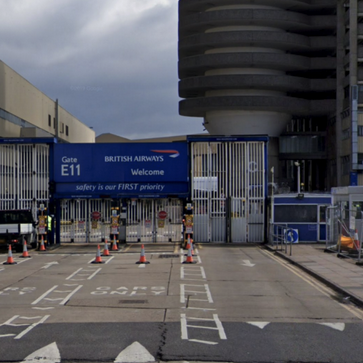Spoiler alert: we care for your battery safetyThe first time I entered the British Airways MRO department at Heathrow I got welcomed at the gate with this massive and important statement:

It inspired me, and being new to the aviation market at that time, I instantly understood why air travel is so incredibly safe. Anybody in the business simply never questions safety and its importance. It is exactly like the medical profession’s Hippocratic oath, requiring physicians to swear to uphold specific ethical standards.
Founding AirFi back in 2011 and building our products since then, we too have kept to the oath on Safety. There have been many occasions when engineers in airlines have zoomed in on the use of lithium-ion batteries in our solution. I am writing this blog precisely because we have placed a lot of emphasis on Safety, and I would like to reiterate this point unequivocally.
First, allow me to explain why we share the commitment:
Everyone has to take all the necessary precautions to ensure safety, just as all the precautions need to be taken to protect us from using faulty parts, spurious emissions, endless procedures and many others. And so, should consumer and Transmitting Portable Electronic Device (T-PED) suppliers like AirFi be held to these exacting standards. There can be no compromise.
Yet, there has been a history of batteries malfunctioning during flights, culminating in the ban of a certain model of Samsung phones back in late-2016 – widely reported as one of the most extensive safety precautions taken – and more recently, the FAA ban on certain 15-inch MacBook Pro laptops from being carried on flights after Apple issued a recall based on its batteries potentially overheating and swelling or igniting. Incidents like these seriously underline the importance of safety in aircrafts.
The use of batteries during flight for C-PED’s (Airline controlled Portable Electronic Device) has increased over the last years with the introduction of portable payment devices, tablets and also portable entertainment solutions. And the way airlines, suppliers and catering companies deal with concerns about batteries differ tremendously. Where in our industry everything is standardised, captured in processes or prescribed by law, the use and especially the care of batteries is limited or not existing.
Sure, there are the guidelines written in the FAA InFo 17020, the TSO C179a/DO-311 and the EASA SIB 2016–08. But nothing is arranged about checking the health of a battery before or during flight. It is our opinion, and this may not surprise anybody, that we all should.

Secondly, the guidelines mentioned earlier are ambiguous. The guidelines set a maximum level of Watt-hours or grams of lithium-ion a device is allowed to operate with as in the caption above. But what if you have a T-PED that runs on 90 Wh but only for 8 hours and requires the airline to carry an additional 2 sets of spare batteries?
Do you still comply with the rules? Sure, there are transportation rules during flight, however, the rules state clearly that all batteries should be considered, not just the ones inside the device. So you cannot exclude the spares. Including the spare batteries seems logical to prevent catering trolleys to become “HazMat” or “DG” containers by default.
As batteries are becoming more common to power portable devices inflight, a growing number of battery-powered applications have enthusiastically come to the market, but built by engineers that never crossed that gate at Heathrow.
A debate is necessary to bring focus on the real dangers and the use of batteries is needed. It should create guidelines on the minimal safety requirements that are needed to operate portable devices with embedded and replaceable batteries that are handled by the crew who may not be the experts on spotting damaged batteries.
So dear EASA and FAA, as market leaders with over 50% of the Portable IFE market, we hereby apply to provide you with our contribution to the matter.
- We want to honour our oath. So, let us kick off with a minimum list of items any CPED manufacturer with batteries above 90Wh should do: Comply to the letter of the rules, all batteries should be accounted for including the spares
- Battery overheating, indicating a faulty battery, ready to become a thermal runaway must be measured and acted upon during the use of the system
- Batteries should preferably not be swapped during flight to prevent any chance of short-circuiting and other incidents
- Every battery used for swapping should be protected not only during transportation during the flight but all stages of logistics.
With the COVID-changes in our industry minimising budgets on the airline side and the growing need to come with fast deployable and affordable solutions to deal with the COVID, we see strong growth in battery-operated solutions. A flight without an inflight platform offering multiple passenger engagement and ancillary revenue-generation options is now unthinkable.
So, let’s do no harm. Let’s create clear rules and never question safety when dealing with batteries.
Battery safety is AirFi’s FIRST priority.
yours sincerely, Job Heimerikx
Entrepreneur in Aviation, APEX Board of Directors, Founded AirFi in 2011. email me – job.heimerikx@airfi.aero

